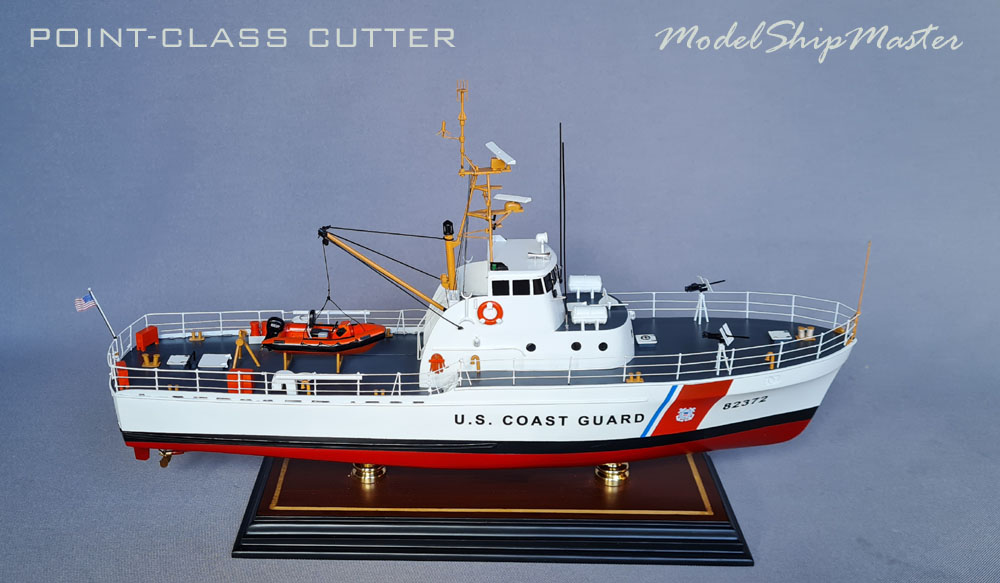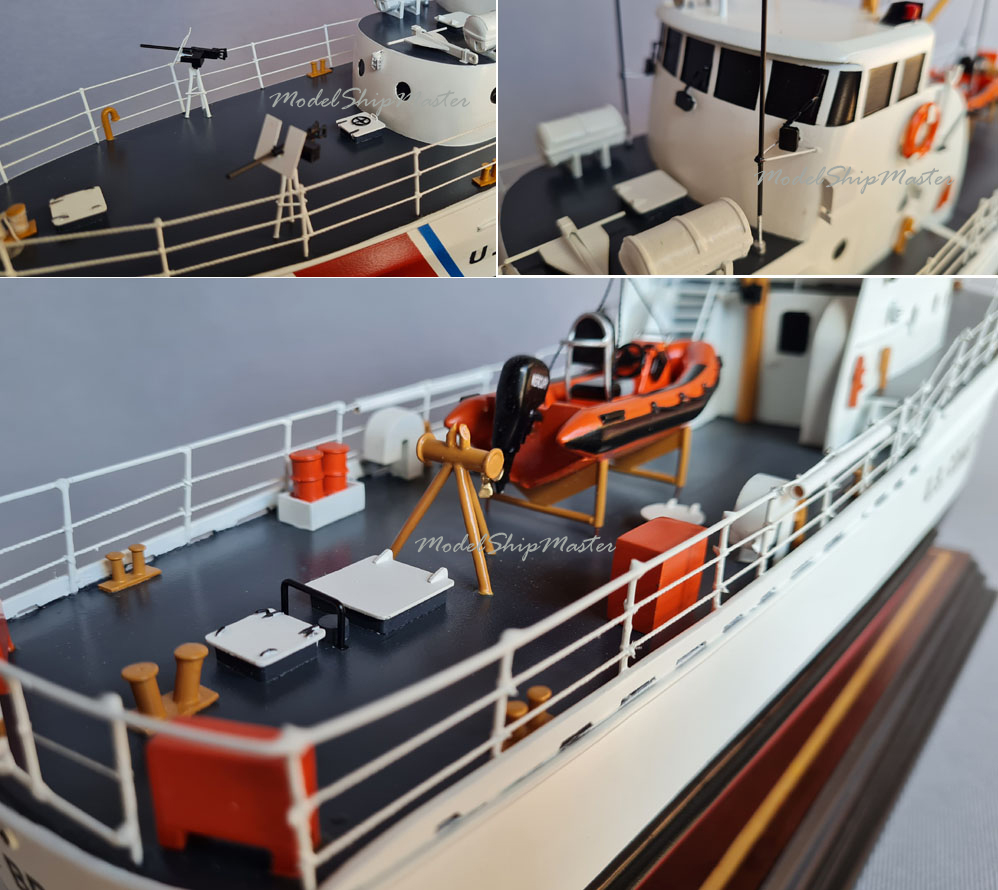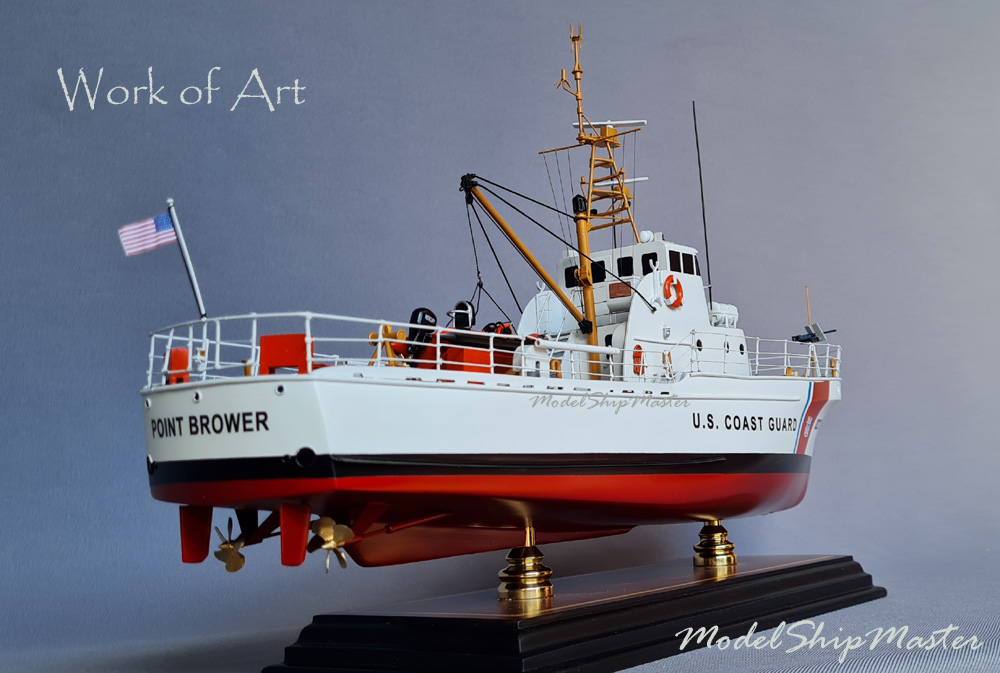|


256-bit encryption
$500,000 protection

|
82-FOOT PATROL BOAT POINT CLASS COAST
GUARD CUTTER
The United
States Coast Guard Point-class cutters were a class of
82-foot patrol vessels. These 60-ton craft, capable of
operating in 6-feet-deep water, had
a steel hull for durability and an
aluminum superstructure.
Powered by a pair of 800hp
diesels, Point-class cutters could exceed 22-knots.

With the goal of reducing manning
requirements in mind, the Point class patrol boat was
designed to accommodate an 8-man crew. Ease
of operation with a small crew size was possible because
of the non-manned main drive engine spaces. Controls and
alarms located on the bridge allowed one man operation
of the cutter thus eliminating a live engineer watch in
the engine room. Four men could operate the Coast Guard
Point class;
however, the need for resting watchstanders brought the
crew size to eight men for normal domestic service.
Between 1960 and 2003, a total of 79 Point class ships
were used for law enforcement and search and rescue. The
U.S. Coast Guard defines a “Cutter” as a vessel over 100
feet in length, having crew accommodations for extended
operations. As these 82-foot vessels met all of those
requirements sans length they were only given hull
numbers until 1964 when the service changed their mind
and began to issue names to cutters larger than 65 feet.
Therefore, all were named after various geographical
“Points” in the country.

Point-class cutters served in Vietnam War. In their
combat mission in the Vietnamese littoral, they were
given five M2 heavy machine guns (.50 cals), painted 20
shade grey, issued more sidearms to include M3 grease
guns, the new M16 rifle, and Thompson submachine guns,
and were even fitted with a piggyback 81mm mortar.
Post-Vietnam, the 53 remaining USCG Point class were updated
and kept in service. Their 20mm gun was replaced by a
pair of single M2 mounts forward and then by the 1980s
just carried sidearms. They fought the war on drugs,
patrolled the border areas and Florida Straits for
refugees, and even had a few uncomfortable standoffs
with Cuban warships.
In May 1991 and over the next thirteen years, 40 cutters
were given as foreign aid to 17 Countries. The last of
these transferred, the Point Bower, went to land-locked
Azerbaijan for use on the world’s largest lake, the
Caspian Sea in 2003. She was also the last Point in
commission with the Coast Guard.
When
planning the replacement for the Point class cutter,
designers took into consideration berthing arrangements
that would accommodate a mixed gender crew. Another
important feature lacking on the Point class cutter that
was desired on a replacement was a stern launch ramp for
the rapid deployment of the cutter's small boat. Both of
these requirements were designed into the
Marine Protector-class that began replacing the
Point class cutters during the late 1990s.

|